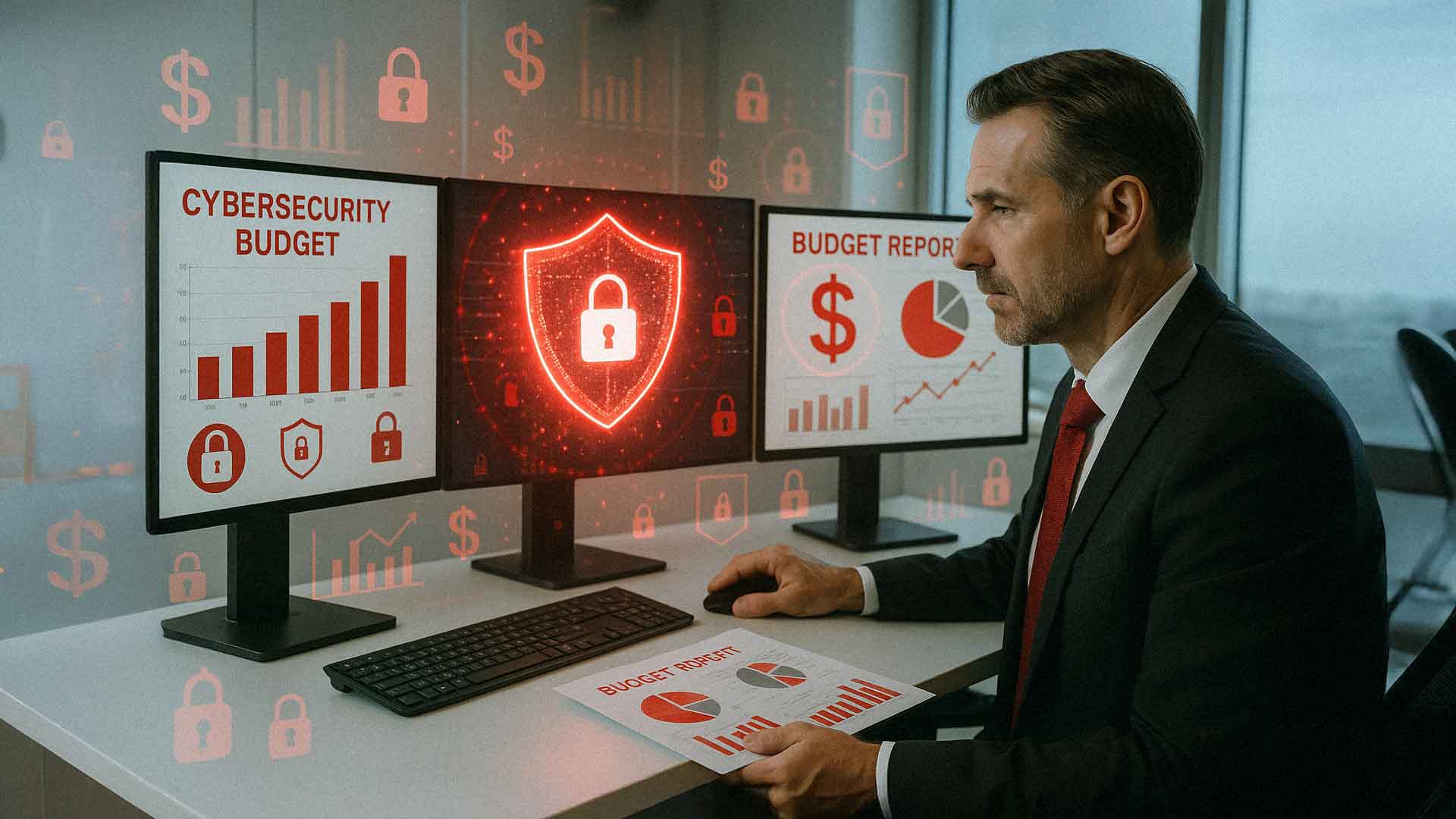Cybersecurity Awareness Month 2025: How Much Should Small Businesses Budget for Cybersecurity?
October 9th, 2025 | 4 min. read

Every October, Cybersecurity Awareness Month reminds us that digital threats are not slowing down. For small and mid-sized businesses, the question is no longer if they will face an attack but when.
One of the most common questions we hear from business owners is: How much should I be spending on cybersecurity? It’s a fair concern.
Cybersecurity feels like insurance—expensive until you need it, then priceless. This article will help you understand what affects cybersecurity costs, what typical ranges look like in 2025, and how to budget realistically for your business.
Why Cybersecurity Awareness Month Matters for Small Businesses
According to CISA, ransomware remains one of the top threats to small businesses in 2025. Attackers target SMBs because they often have weaker defenses but store valuable customer, employee, and financial data.
Here’s why October is a good time to rethink your security budget:
- The average cost of a data breach for small businesses now exceeds $220,000, according to recent reports.
- 60% of SMBs close within six months of a cyberattack.
- Insurance companies are requiring stronger controls before offering cyber liability coverage.
Cybersecurity Awareness Month serves as a reminder that ignoring the problem is usually the most expensive choice.
What Factors Affect the Cost of Cybersecurity?
There isn’t a one-size-fits-all price. Your costs depend on several factors:
Size of your business and number of employees
The more people you have, the more devices, accounts, and endpoints need to be protected.
Industry and compliance requirements
Healthcare organizations (HIPAA), financial services (GLBA), and retailers (PCI DSS) face stricter requirements. Compliance increases costs but also reduces liability.
In-house IT vs. outsourcing to a managed IT provider
If you have an in-house IT team, they may still need specialized cybersecurity support. Managed IT services often bundle cybersecurity tools, monitoring, and training at a predictable monthly cost.
Security tools and technology stack
Basic tools include antivirus, firewalls, and multi-factor authentication. Advanced protection involves 24/7 monitoring, endpoint detection, and response services.
Ongoing employee training and awareness programs
Human error remains the biggest cause of breaches. Annual training and phishing simulations add to costs but reduce long-term risk.
Typical Cybersecurity Costs for Small Businesses in 2025
Pricing varies widely, but here’s a breakdown of what most SMBs can expect:
Entry-level protections
- Firewalls, antivirus, and MFA.
- $500 to $2,500 annually, depending on size.
- Covers the basics but leaves gaps against sophisticated attacks.
Managed IT and cybersecurity services
- $100 to $250 per user per month.
- Includes monitoring, patch management, email security, backups, and help desk support.
- Predictable, scalable, and usually the most cost-effective option for SMBs.
Incident response and recovery costs
If you don’t invest in prevention, a single breach can cost:
- $50,000 to $250,000 in ransom payments, downtime, and recovery.
- Damage to your reputation is harder to measure.
Investing a few thousand dollars a year often saves hundreds of thousands in potential losses.
How Much Should You Budget for Cybersecurity?
As a rule of thumb, businesses should allocate 5–10% of their IT budget toward cybersecurity. But let’s break it down further:
- Minimalist (bare essentials, risky): Antivirus, firewall, MFA. Around $1,000–$3,000 per year.
- Standard (recommended for most SMBs): Managed IT with monitoring, training, and backups. Around $12,000–$30,000 annually for a 25–50 person business.
- Advanced (compliance-heavy industries): Full endpoint detection, compliance reporting, penetration testing. $40,000+ annually.
If your budget is tight, start with MFA, backups, and phishing awareness training. These provide the best “return on investment” for reducing risk.
Common Mistakes SMBs Make When Budgeting for Cybersecurity
Treating cybersecurity as a one-time purchase
Security isn’t a set-and-forget product. It requires updates, monitoring, and training.
Assuming free tools are “good enough”
Free antivirus or training programs don’t protect against targeted attacks.
Forgetting to include training costs
Most breaches involve human error. Training should be built into your annual budget.
Waiting until after an incident to invest
By the time you realize the importance, the damage is already done. Prevention is always cheaper.
How to Get the Best Value for Your Cybersecurity Spend
You don’t need to overspend. Instead, focus on value:
- Bundle services with a trusted provider. Managed IT providers spread costs across clients, giving you enterprise-grade protection at SMB pricing.
- Prioritize layered security. A firewall alone won’t stop phishing. MFA alone won’t stop ransomware. A layered approach covers multiple attack vectors.
- Evaluate vendors carefully. Ask about included services, 24/7 monitoring, and response times. Cheaper plans often skip the most critical protections.
Next Steps for SMBs During Cybersecurity Awareness Month
Cybersecurity Awareness Month is the perfect reminder to review your defenses. Here are a few actions you can take right now:
- Schedule a free or low-cost security assessment.
- Update company policies for passwords, MFA, and remote work.
- Refresh employee training with phishing simulations.
- Review your backups and test recovery procedures.
Cybersecurity is less about spending the most and more about spending wisely. The right budget depends on your size, industry, and risk tolerance, but doing nothing is the most costly choice of all.
To learn more about cybersecurity, make sure to reach out to us today!
A true southerner from Atlanta, Georgia, Marissa has always had a strong passion for writing and storytelling. She moved out west in 2018 where she became an expert on all things business technology-related as the Content Producer at AIS. Coupled with her knowledge of SEO best practices, she's been integral in catapulting AIS to the digital forefront of the industry. In her free time, she enjoys sipping wine and hanging out with her rescue-dog, WIllow. Basically, she loves wine and dogs, but not whiny dogs.
Topics:



